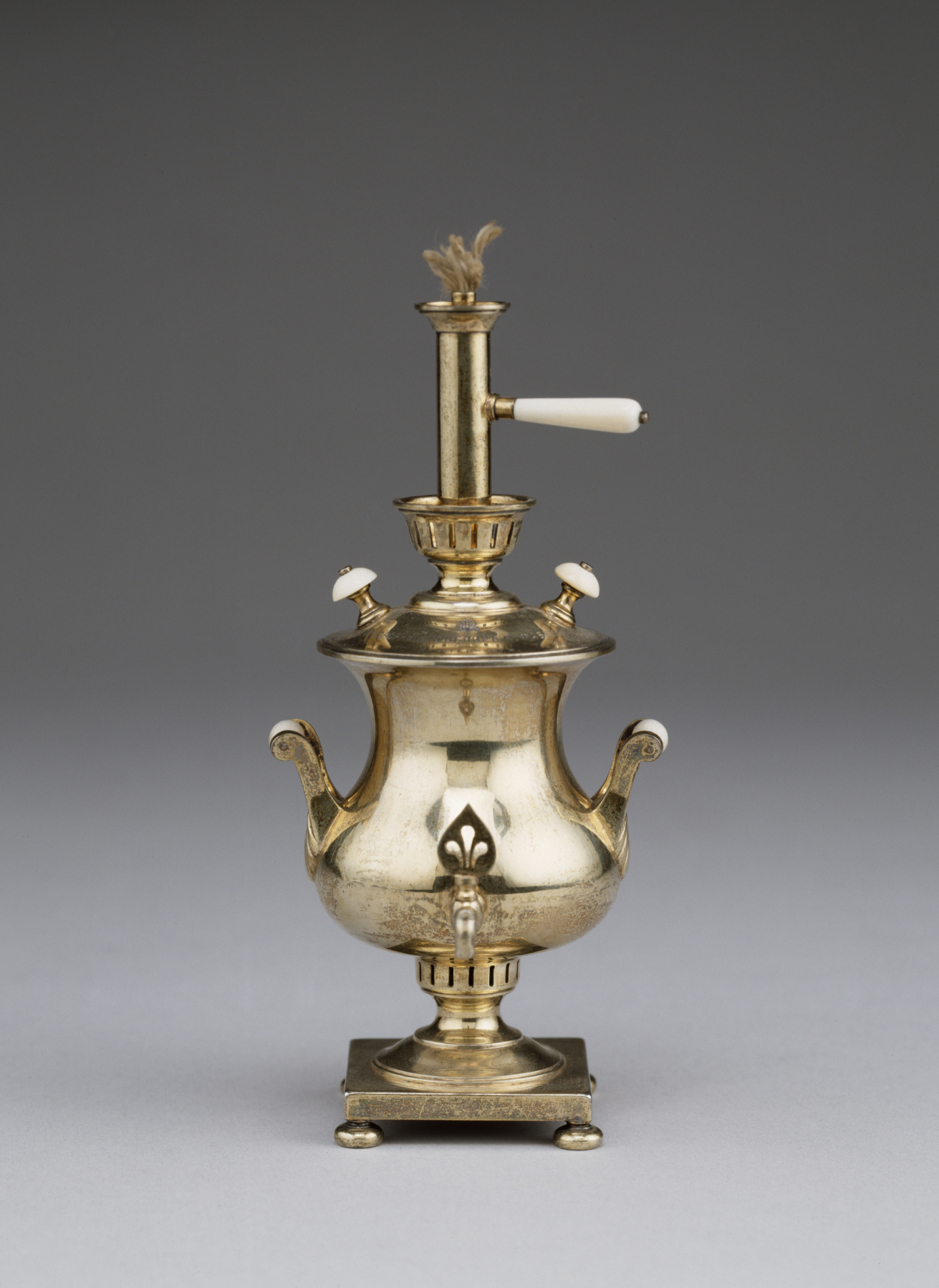Spirit Lamp in the Form of a Samovar
(18th and 19th Centuries )
This spirit lamp is in the form of a samovar, an ornate urn traditionally used for making tea in Russia. A cotton wick extends beyond the inner tube that would have served as the heating element in a samovar. Impressed in the lid is an Imperial eagle and an inscription in Cyrillic that translates: "K. Fabergé, Jeweler of the Court/St. Petersburg." A similar spirit lamp with the St. Petersburg assay mark for 1908-17 was produced in gold under the direction of Henrik Wigström.
Vladimir Soloviev assumed control of an independent workshop that had been founded in St. Petersburg by Phillip Theodor Ringe (1824-82) and had subsequently been operated by Anders Mickelson (1839-1918). All of Soloviev's work dates from the last decade of the Fabergé firm's existence.
Inscription
Provenance
Provenance (from the French provenir, 'to come from/forth') is the chronology of the ownership, custody, or location of a historical object. Learn more about provenance at the Walters.
Dr. N. Dorin Ischlondsky, New York [date and mode of acquisition unknown]; Walters Art Museum, December 1961, by gift.
Exhibitions
| 2003-2004 | The Fabergé Menagerie. The Walters Art Museum, Baltimore; Columbus Museum of Art, Columbus; Portland Art Museum, Portland. |
Geographies
Russia, St. Petersburg (Place of Origin)
Measurements
5 in. (12.7 cm)
Credit Line
Gift of Dr. N. Dorin Ischlondsky, 1961
Location in Museum
Not on view
Accession Number
In libraries, galleries, museums, and archives, an accession number is a unique identifier assigned to each object in the collection.
In libraries, galleries, museums, and archives, an accession number is a unique identifier assigned to each object in the collection.
57.1911


